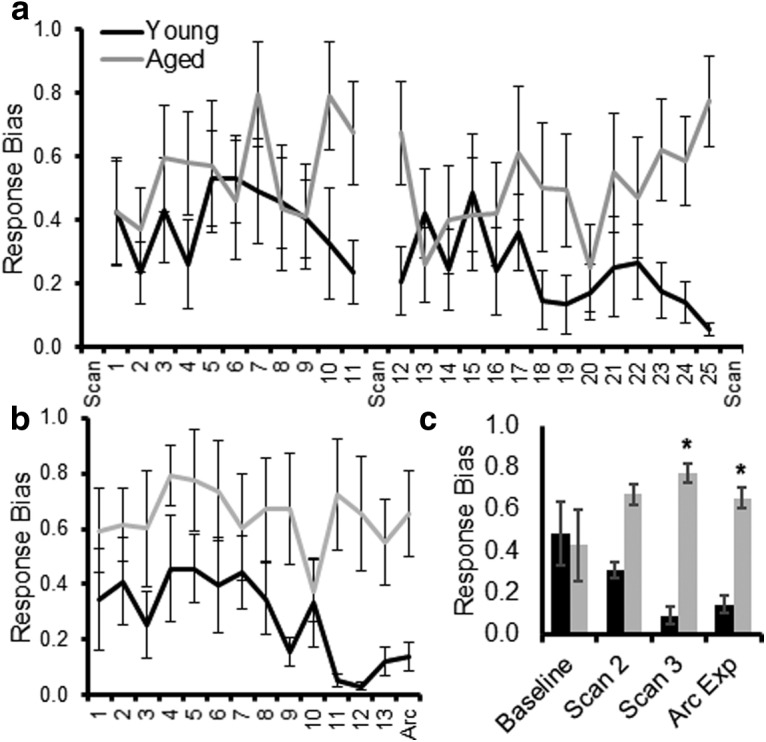Figure 2.

Response biases during WM/BAT training. a, The response bias index quantifies the tendency of a rat to select an object on one side (left vs right) regardless of the object identity and choice platform on the maze. A value of 0 is no bias, and a value of 1 is a complete bias to one side. Most rats show a response bias that decreases as they start to perform better. Aged rats have a tendency to retain a response bias across more days of testing. The response bias is plotted across testing days between resting-state fMRI scans. b, The response bias is shown across days of testing before and on the day of the Arc experiment. Overall, the aged rats showed a significantly greater response bias than the young rats. c, The response bias of young and aged rats on the day immediately following the baseline scan, the days before scans 2 and 3, and on the day of the Arc experiment. Aged rats had a significantly greater response bias compared with young rats before scan. Error bars are ± 1 SEM, *p < 0.05.
